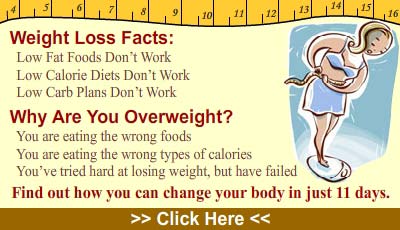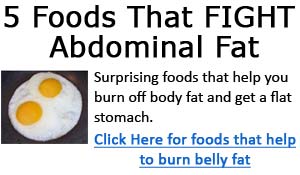There are plenty of evidence to show that having high abdominal fat is linked to cardiovascular diseases. In a 2008 study of abdominal adiposity and mortality involving 44,636 subjects, 3507 death were identified including 751 cardiovascular deaths and 1748 cancer deaths during 16 years of follow up. It was found that abdominal obesity was highly associated with elevated cardiovascular disease mortality. The study found that the BMI (body mass index) was not associated with greater risk of death, but that elevated waist circumference was associated with significantly increased cardiovascular mortality even among normal-weight women .[1]
Another 2006 UK study also had similar findings. Over 14,000 subjects from 53 family practices in the UK were assessed for BMI and waist / hip circumference and then followed up for mortality. 6649 subjects died with 46% being circulatory causes. The study found that increasing waist to hip ratio was associated with increased hazard ratio for mortality, and BMI was not related with circulatory mortality. This study found that BMI based risk categories over-estimate risks due to excess weight, and waist to hip ratio (abdominal obesity) was more indicative of circulatory mortality. [2]
While the Body Mass Index (BMI) is widely used to assess "normal" weight for an individual based on his or her height, it does not take into account other more important factors such as body fat percentage and body composition. Based on the BMI, a normal BMI range is between 18.5 to 25. Having a BMI of 25 to 30 is overweight, and having a BMI of over 30 is considered obese. The biggest issue with the BMI is that it does not take into consideration a person's lean body mass and body fat mass. Two individuals with the same height and weight would have the same BMI, but they could have significantly different body compositions. Person A could have much lower body fat and higher lean mass compared to person B who has much high body fat simply because muscle mass weighs more than fat mass.
It should come as no surprise that having excess belly fat and having a high waist to hip ratio is highly associated with cardiovascular diseases and mortality as various studies have discovered. If you are overweight or obese, it is important to take the right steps to begin reducing body fat and losing your belly fat.
How to Lose the Belly Fat Fast
Getting rid of your belly fat is no easy business. When it comes to losing tummy fat and body fat, a clear distinction must be made between "Weight Loss" and "Fat Loss". Weight loss can be a reduction of body weight by any means - flush out water using a diuretic, getting rid of wastes through colon cleansing, lose some muscle, lose some fat, or losing a limb or two. These are all "weight loss". After all the end result is you losing weight one way or another.
Fat Loss, on the other hand, is an entirely different issue. To lose weight, your ultimate goal is to burn off body fat and to lose belly fat. To get rid of body fat, you need to tap into long term stores of energy - body fat, and the only way to do this is with a calorie deficit. When you lose weight, body fat is not the only thing that is lost. Other sources of energy such as carbohydrates and proteins are also burned as energy during your weight loss. During this process, you can also end up losing some lean muscle mass as well, which is the least desirable effect of a weight loss program. Unlike body fat, your muscles expend energy, thus help you burn off calories. As you lose muscles, your metabolic rate also decreases making weight loss more difficult.
To preserve muscle mass while reducing body fat, you need to follow a relatively high protein diet and do regular weight lifting. Simply following a diet to create a calorie deficit is not enough for sustained longer weight loss. Anyone who tells you weight lifting is irrelevant to fat loss doesn't know what he/she is talking about, or don't understand the difference between "weight loss" and "fat loss". In fact, exercising is one of the most important aspects of a successful fat loss program. There are studies that have found a direct link between exercise and reduction in waist size. [3]
Tips to Help Lose Belly Fat
Excess body fat and obesity is a leading cause of health problems. As studies have found, there is a direct link between having high amounts of abdominal fat and cardiovascular disease and mortality. Research has shown that even for normal weight individuals, having most of your fat in your tummy area increases your health risks.
Some extreme cases of obesity will require more than just diet and exercise such as prescription drugs or surgery; however, for most cases, a good combination diet and exercise will do. There are certain things you can do that will help you lose belly fat and body fat.
- Create a calorie deficit with a good diet and physical activity
- Increase your meal frequency and eat smaller meals
- Start strength training - gaining lean muscle mass helps burn more fat in the long run
- Drink more water - studies have found that increasing water consumption increases weight loss
- Increase protein intake
- Cut down on alcohol
- Reduce your level of stress - there are numerous studies that link chronic stress to obesity
- Avoid eating fatty foods
- Understand that you cannot spot reduce - hence you cannot specifically target to lose belly fat, but must achieve that goal through losing overall body fat
- Train using shorter, high intensity cardio workouts.
In the following articles, we'll cover some of these tips on losing belly fat in more detail.
>> Click here to learn more about the Fat Loss for Idiots Diet
>> Click here for Tom Venuto's Burn the Fat Feed the Muscle program

 One of the most difficult areas to lose fat from is your stomach fat. The belly fat accumulated there is by far the most challenging areas for many people. If you do a poll asking people what their least favorite body parts were, I would not be surprised to a majority responded with their belly fat being their least favorite. Most are aware that eating fatty foods, high levels of stress, and sedentary lifestyle and lack of physical exercise are all contributing factors to becoming fat and having excess tummy fat. In today's fast paced society, regardless if your single, married, have kids, or have no kids, you're in a constant struggle to balance work, life, and family, and always seek the quickest solutions and fastest foods. Yet, there seems to be little time left to yourself - to relax, lift some weights, and blow off some steam.
One of the most difficult areas to lose fat from is your stomach fat. The belly fat accumulated there is by far the most challenging areas for many people. If you do a poll asking people what their least favorite body parts were, I would not be surprised to a majority responded with their belly fat being their least favorite. Most are aware that eating fatty foods, high levels of stress, and sedentary lifestyle and lack of physical exercise are all contributing factors to becoming fat and having excess tummy fat. In today's fast paced society, regardless if your single, married, have kids, or have no kids, you're in a constant struggle to balance work, life, and family, and always seek the quickest solutions and fastest foods. Yet, there seems to be little time left to yourself - to relax, lift some weights, and blow off some steam. 
